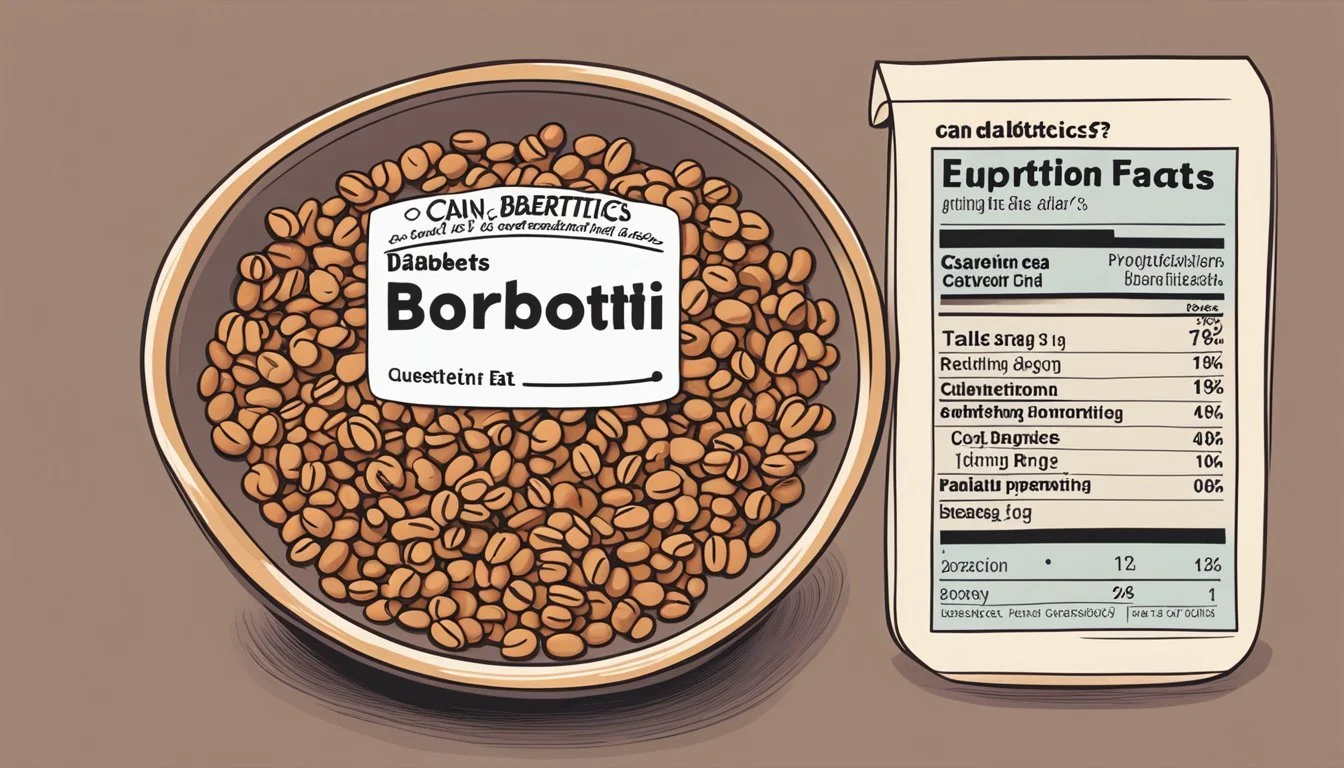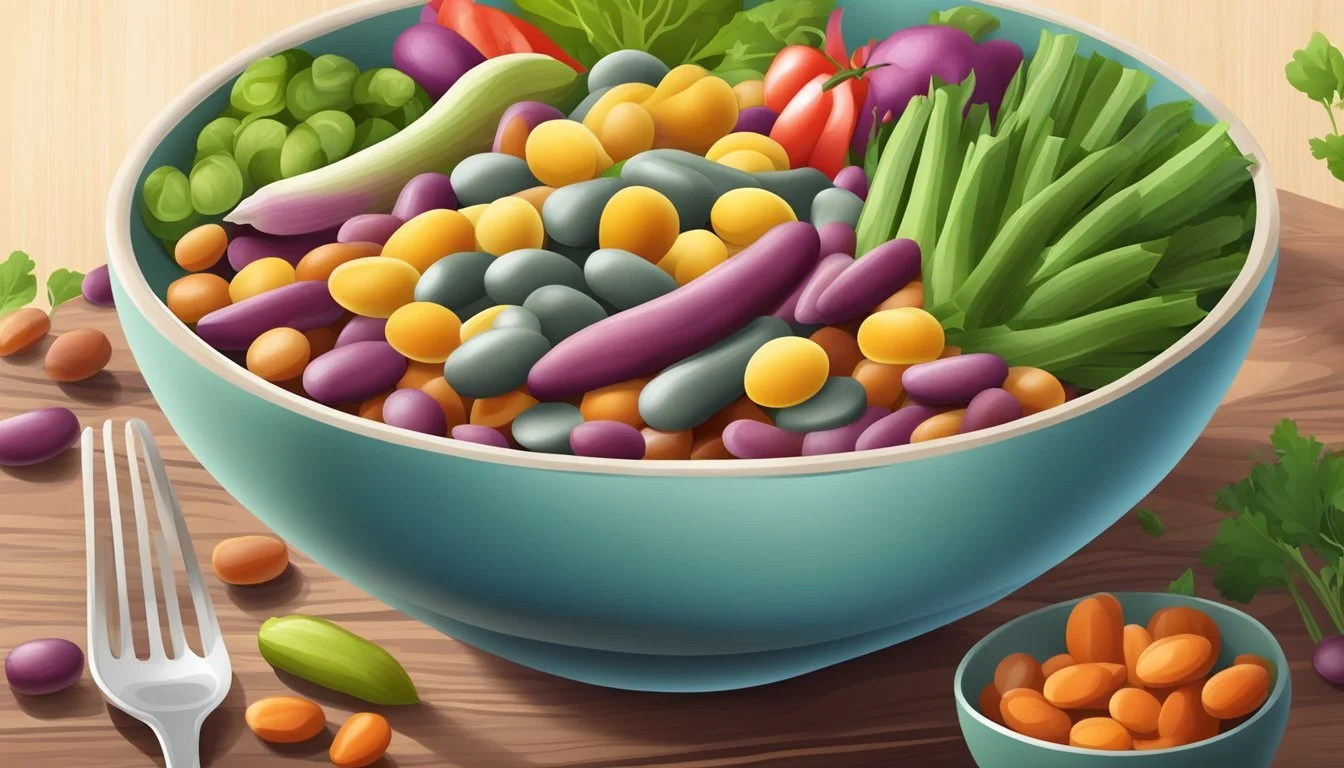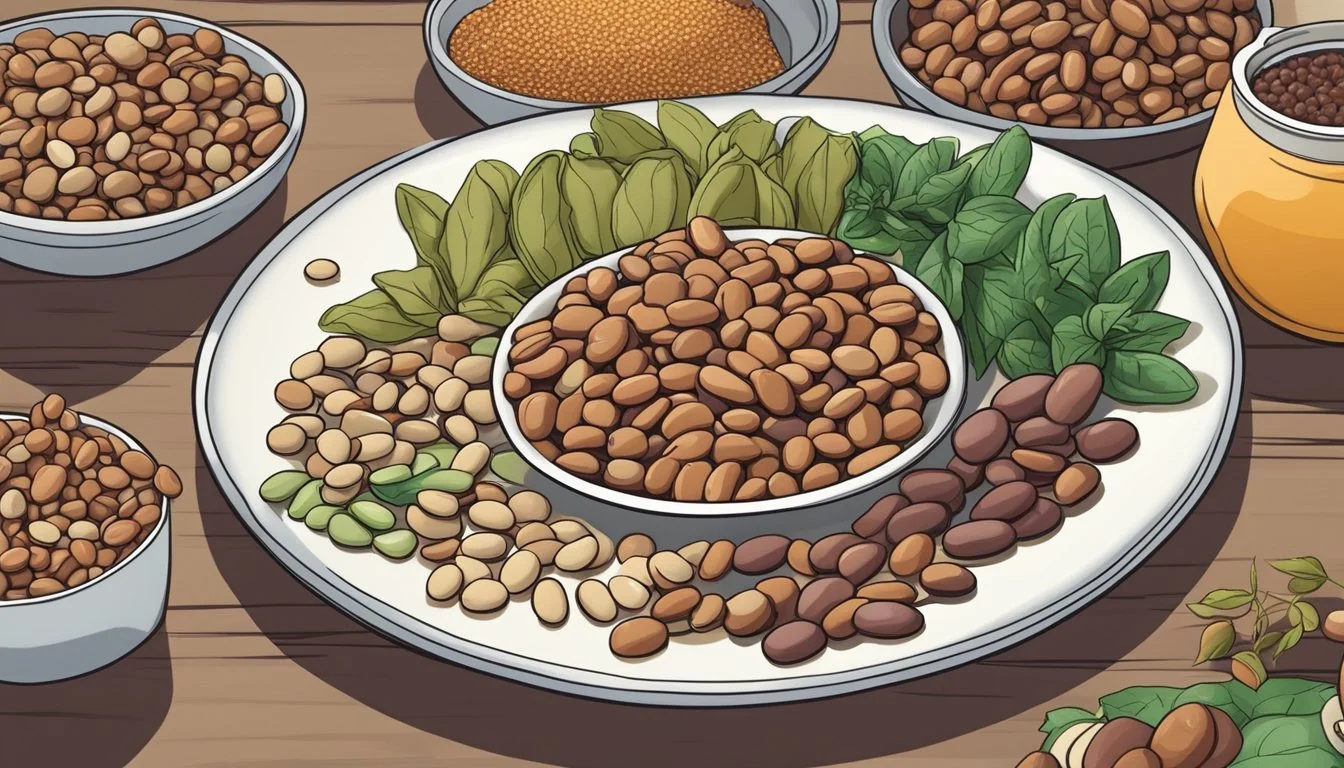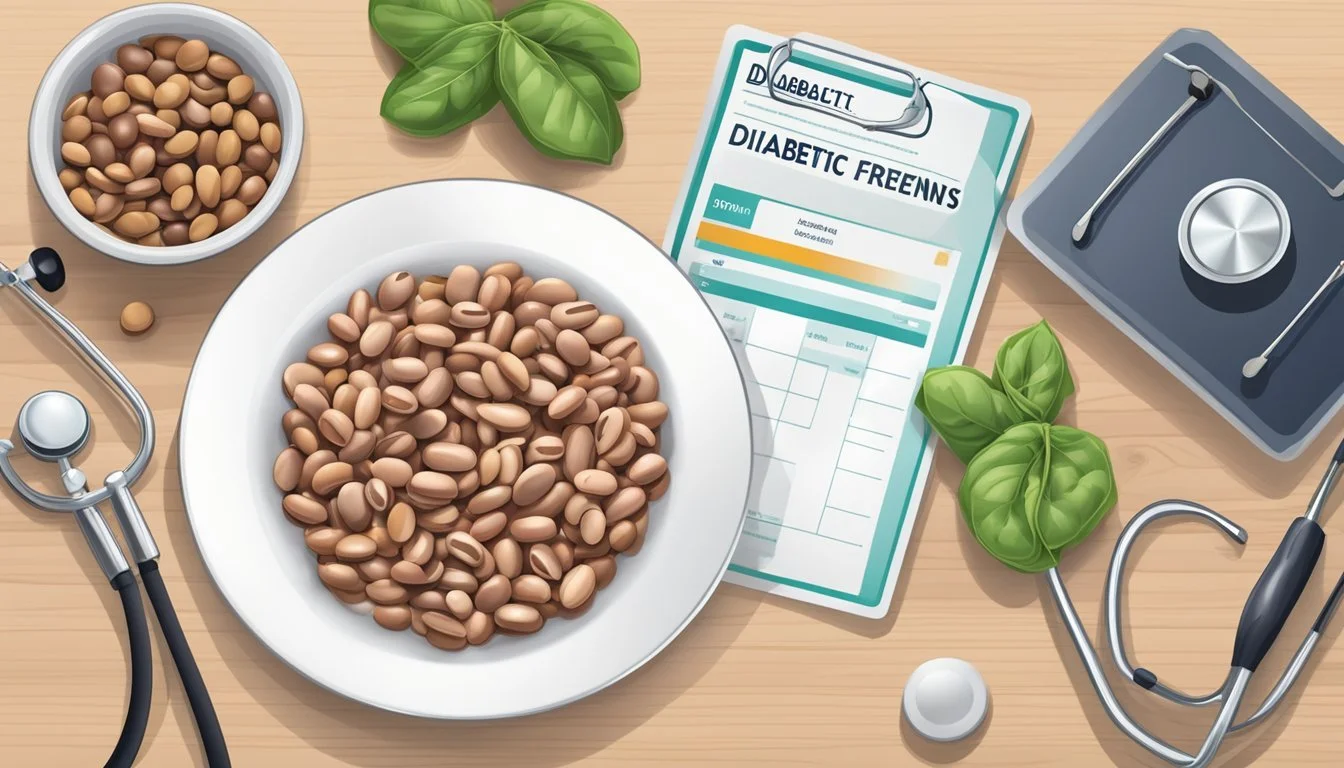Can Diabetics Eat Borlotti Beans?
Nutritional Insights and Health Benefits
People with diabetes often find themselves navigating a sea of dietary recommendations, trying to manage their blood sugar levels effectively. One question that arises is whether Borlotti beans can be part of a diabetic-friendly diet. The good news is that Borlotti beans can be a healthy choice for those managing diabetes.
Packed with protein, fiber, and essential nutrients, Borlotti beans offer a nutritional profile that supports stable blood sugar levels. The fiber content in these beans helps slow down the absorption of glucose, preventing rapid spikes in blood sugar. This makes Borlotti beans a great addition to the diets of people with diabetes.
In addition to their blood sugar benefits, Borlotti beans also provide significant amounts of vitamins and minerals, enhancing overall health. Incorporating Borlotti beans into various dishes can be both tasty and beneficial, contributing to a balanced and nutritious meal plan suitable for diabetes management.
Understanding Diabetes and Dietary Needs
People with diabetes must carefully manage their diet to regulate blood sugar levels, ensuring they get essential nutrients without causing harmful spikes in glucose. This section examines the role of carbohydrates, protein, and fat, as well as the importance of weight management in diabetes control.
Role of Carbohydrates in Diabetes Management
Carbohydrates directly affect blood sugar levels. When consumed, they break down into glucose, which enters the bloodstream. Simple carbs, like those in sugary foods, can cause rapid spikes.
Complex carbs, found in whole grains, legumes, and vegetables, break down slowly, providing a steadier release of glucose.
The glycemic index (GI) ranks carbohydrates based on how they affect blood sugar. Low-GI foods are preferable for diabetics as they lead to gradual increases in glucose.
Monitoring carbohydrate intake helps in diabetes management by maintaining stable blood sugar levels and reducing the risk of complications.
Importance of Protein and Fat for Diabetics
Protein is essential for maintaining muscle health and provides a feeling of fullness, which can help in controlling appetite. It has a minimal impact on blood sugar levels, making it a crucial component of a diabetes diet.
Sources of protein such as lean meats, beans, and legumes are beneficial.
Fats are important for overall health but should be consumed in moderation. Healthy fats like those found in avocados, nuts, and olive oil support heart health, which is vital since diabetes increases the risk of heart disease.
Balancing protein and fats helps in meal planning, ensuring that glucose levels remain steady.
Managing Weight and Diabetes
Managing weight is critical for diabetes control. Excess weight can worsen diabetes by causing insulin resistance, making blood sugar management more difficult. A combination of healthy eating, regular physical activity, and frequent monitoring of blood sugar levels can support weight loss and improve diabetes outcomes.
A well-planned diet plan should focus on nutrient-dense foods that are low in unhealthy fats and sugars. Regular physical activity aids in weight loss, enhances insulin sensitivity, and helps regulate glucose levels.
Addressing weight through lifestyle changes can lead to better diabetes control and reduce the risk of complications such as heart disease.
Nutritional Profile of Borlotti Beans
Borlotti beans are an excellent source of several key nutrients that are beneficial for diabetics. They offer a rich profile of macronutrients and essential vitamins and minerals, making them a nutritious choice for anyone, including those managing diabetes.
Macronutrients in Borlotti Beans
Borlotti beans are low in fat while being rich in carbohydrates and protein. A typical 177-gram cup serving provides approximately 16.5 grams of protein, which is essential for muscle repair and immune function.
These beans also contain complex carbohydrates, which have a slower digestion rate, making them beneficial for blood sugar control. Each cup serving contains around 15 grams of dietary fiber, which aids digestion and helps in maintaining stable blood glucose levels. The total calorie count for a cup of cooked Borlotti beans is roughly 240 calories.
Vitamins and Minerals in Borlotti Beans
Borlotti beans are packed with essential vitamins and minerals. They provide a good amount of iron, zinc, and magnesium, which are crucial for various bodily functions including oxygen transport and enzyme activities.
A cup serving also delivers a significant quantity of potassium, aiding in blood pressure regulation. These beans are a good source of folate (vitamin B9), necessary for red blood cell formation and healthy cell growth. Other vitamins include small amounts of vitamin E and several B vitamins, contributing to overall health and well-being.
Comparing Borlotti With Other Beans
When compared to other beans like kidney beans, pinto beans, and black beans, Borlotti beans hold their ground nutrient-wise. While kidney beans and black beans share similar carbohydrate and protein profiles, Borlotti beans often have a richer, creamier texture.
Nutritionally, Borlotti beans contain comparable or sometimes even higher levels of fiber and protein. White beans and navy beans are also nutrient-dense, but Borlotti's unique combination of minerals like potassium and magnesium make them particularly beneficial for maintaining electrolyte balance and muscle function.
The versatility and nutrient density of Borlotti beans make them a valuable addition to a diabetes-friendly diet.
Benefits of Beans in a Diabetes Diet
Beans offer multiple health benefits for individuals with diabetes, including aiding in blood sugar control and supporting cardiovascular health. Their nutritional properties make them an excellent choice for a diabetes-friendly diet.
Glycemic Index and Blood Sugar Control
Beans generally have a low glycemic index (GI), which means they cause a slower rise in blood sugar levels compared to high GI foods. This is crucial for people with diabetes as it helps maintain steady blood glucose levels.
The American Diabetes Association supports the inclusion of beans in a diabetic diet due to their low GI. For instance, Borlotti beans have a GI of around 30, making them a great option for managing blood sugar.
Fiber Content and Digestive Health
Beans are high in dietary fiber, particularly soluble fiber, which is beneficial for digestive health. Soluble fiber slows down the digestion and absorption of sugar, aiding in blood sugar control. A diet rich in high-fiber foods can prevent spikes in blood glucose levels.
Each serving of beans can provide about 6-8 grams of fiber, contributing significantly to the recommended daily intake. This high fiber content supports healthy digestion, potentially reducing the risk of colon issues.
Heart Health and Cholesterol
High levels of LDL (bad) cholesterol are a risk factor for heart disease, which diabetics are more prone to. The soluble fiber in beans helps lower LDL cholesterol, promoting better heart health. Regular consumption of beans can contribute to improved cardiovascular health and reduced risk of heart disease.
Beans are also low in fat and rich in essential nutrients like potassium and magnesium, further supporting heart health. Regularly including beans such as Borlotti in meals can benefit long-term cardiovascular outcomes.
Incorporating Borlotti Beans into a Diabetic Diet
Borlotti beans are a nutritious addition to a diabetic diet, offering plant-based protein and fiber. They are versatile and can be included in various meals, ensuring balanced blood sugar levels.
Meal Planning with Borlotti Beans
Borlotti beans are a great inclusion in a diabetic meal plan due to their high protein and fiber content. They help in maintaining satiety, reducing the likelihood of snacking between meals.
For portion control, 1/3 cup of cooked Borlotti beans is considered one starch diabetic exchange, providing about 80 calories. Including them in salads, soups, or as a side dish can diversify meals while adhering to dietary needs. When using them in recipes, balance the meal with other low glycemic index foods to avoid spikes in blood sugar.
Cooking Methods and Preparation
Dried Borlotti beans should be soaked overnight before cooking to reduce cooking time and improve digestibility. After soaking, they can be boiled until tender, which usually takes about 45-60 minutes.
For a quicker option, canned Borlotti beans can be used; just ensure to rinse them thoroughly to reduce sodium content. Cooking methods like boiling and steaming are preferable, as they preserve the bean’s beneficial nutrients without adding unnecessary fats. They can also be incorporated into slow-cooked dishes like stews and chili.
Creative Recipe Ideas
Expanding your dietary repertoire with Borlotti beans can be both easy and delicious. They can be used in:
Salads: Mix Borlotti beans with greens, tomatoes, and a light vinaigrette.
Soups: Add them to vegetable or chicken broth-based soups for added texture and nutrition.
Chili: Combine with ground turkey, tomatoes, and spices for a hearty meal.
Hummus: Blend cooked beans with garlic, lemon, and tahini for a unique twist.
Side Dish: Simply season with olive oil, garlic, and herbs for a tasty accompaniment to your main course.
These ideas offer balanced, nutritious meals that help manage diabetes effectively. Remember to enjoy Borlotti beans in moderation and as part of a varied diet.
Potential Downsides and Precautions
While Borlotti beans offer numerous benefits, there are also potential drawbacks and precautions that diabetics should consider. These include issues related to sodium in canned beans, gastrointestinal effects, and the possibility of allergies or intolerances.
Sodium and Canned Bean Products
Canned Borlotti beans often contain high levels of sodium, which can be harmful to diabetics managing their blood pressure. A single serving can contain up to 500 mg of sodium or more. Excessive sodium intake may increase the risk of hypertension, which is a common concern for people with diabetes.
Opting for low-sodium or no-salt-added varieties can help mitigate this issue.
Rinsing canned beans under cold water for a minute can also reduce their sodium content by around 40%. Always check food labels to be aware of the sodium levels in canned products.
Gastrointestinal Effects of Beans
Consuming beans can sometimes lead to gastrointestinal issues such as gas, bloating, and indigestion. This is due to the high fiber content and the presence of oligosaccharides, carbohydrates that are difficult to digest. These effects are usually temporary but can be uncomfortable.
Diabetics who are not used to a high-fiber diet should introduce Borlotti beans gradually to allow their digestive system to adjust.
Taking digestive enzyme supplements may help minimize these gastrointestinal effects. Cooking beans thoroughly and incorporating them slowly can also alleviate these issues.
Allergies and Intolerances
Though rare, some individuals may have allergies or intolerances to beans, including Borlotti beans. Symptoms can range from mild, such as itching and swelling, to severe, like difficulty breathing and anaphylaxis. For someone with diabetes, managing an allergic reaction can be particularly complicated due to the effects on blood sugar levels.
It is important to consult a healthcare provider before incorporating Borlotti beans into the diet if there is a known bean or legume allergy.
Monitoring any food intake for adverse reactions and keeping anti-allergy medications on hand is advisable for those who suspect they might have an intolerance or allergy.
Expert Opinions and Recommendations
Borlotti beans are a nutritious option for diabetics, providing essential fiber and protein while aiding in glycemic control. Experts from various fields offer valuable insights and guidelines on incorporating Borlotti beans into a diabetes-friendly diet.
Dietitian and Diabetes Educator Insights
Certified Diabetes Educators and dietitians emphasize the benefits of Borlotti beans in managing diabetes. Borlotti beans have complex carbohydrates that digest slowly, preventing rapid blood sugar spikes. They are also high in soluble fiber, which can help stabilize blood sugar levels. Dietitians recommend incorporating Borlotti beans into meals like salads, soups, and stews to provide sustained energy and satiety. These beans are also a low-fat source of protein, making them a beneficial alternative to meat-based proteins that may contain unhealthy fats.
American Diabetes Association Guidelines
The American Diabetes Association (ADA) includes beans, such as Borlotti beans, in their list of recommended foods for diabetics. The ADA highlights beans for their high protein, fiber, and essential nutrients content. They suggest that diabetics aim for a balanced intake of these beans to help manage blood sugar levels. The ADA also notes that a typical diabetes exchange of beans is 1/3 cup of cooked beans, which provides approximately 80 calories. This measurement helps in meal planning and maintaining portion control for effective glycemic management.
Research Findings on Beans and Diabetes
Research supports the inclusion of Borlotti beans in a diabetes management plan due to their positive impact on blood sugar levels. Studies indicate that the fiber in Borlotti beans can enhance glycemic control by slowing glucose absorption. This makes them an excellent addition to a diabetic-friendly diet. Additionally, research shows that regular consumption of beans, including Borlotti beans, can reduce the risk of cardiovascular complications, which are common in individuals with diabetes. The nutritional profile of Borlotti beans contributes to their status as a superfood for diabetes management.








